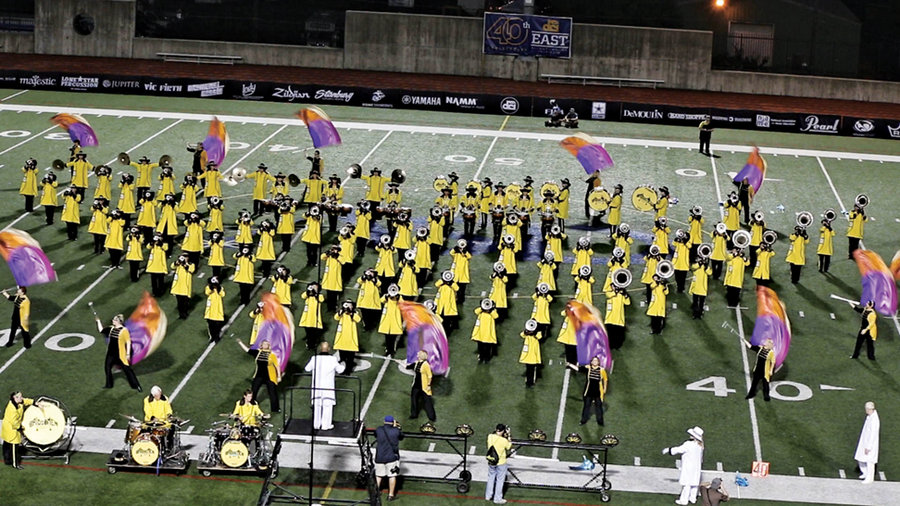The beloved Bayonne Bridgemen are hanging up their horns. The corps played its penultimate performance in Allentown, PA, for the Drum Corps International (DCI) Eastern Classic on Saturday, August 6 before a crowd of 9,000. It received four standing ovations after the performance during which it re-enacted the fainting gag made famous in the drum corps community at the end of the 1976 DCI World Championships. In that performance, the entire drum and bugle corps collapsed on the ground simultaneously, as if knocked over by the heat of summer.
The Allentown gig was just a warm-up for the final performance on August 12 at the DCI World Championship Semifinals in Indianapolis.
The ‘banana train’
It was antics like these that made the Bridgemen stand out from the rest of the pack back when drum corps used to be boring. Bridgemen Director, George Lavelle, was in the crowd that night in 1976. “I can tell you being there live, it was amazing,” he said. “All of a sudden, you hear a roar, and everyone is lying on the ground, and the legend was born.”
Stories of Bridgemen gags throughout its storied history are bountiful. In the first year, wearing their iconic yellow coats, they did a Rockettes-style can-can. (Lavelle refers to the corps as the “banana train” because of these yellow coats.) Another year, they performed an interpretation of a New York City traffic jam, with a real NYPD officer coming out on the field to direct the congested traffic, made up of drummers and brass players simulating the sounds of honking horns and fender benders. In 1980, at the corps’ height, they played the Civil War Suite in Birmingham, Alabama, while pretending to be General Robert E. Lee and General Ulysses S. Grant.
Those gags and performances represented a core philosophy that challenged the establishment, presenting the drum corps as lighthearted, fun, and entertaining, rather than as militaristic.
“When the Bridgemen came out in 1976, the establishment wanted us to go away,” Lavelle said, “but the Bridgemen brand just caught fire because we didn’t care about who won, with points or anything. We just wanted to entertain.”
Even the yellow coats were meant to challenge the established norms of drum-corps culture. Lavelle is still bitter about the Bridgemen’s 1977 DCI disqualification, in which an age restriction rule was invoked, preventing anyone over the age of 22 from competing. “It was a lot of nonsense,” he said.
Lavelle credits the late Bobby Hoffman with many of the group’s innovations: “He pushed the bar, and people didn’t like him because of that, but he was a genius.”
Lavelle said, “We kept that philosophy. We think outside the box with some of the gags we use, and people react the same way now as they did back then.” He says every time they do it, “the crowds go wild.”
“When the Bridgemen came out in 1976, the establishment wanted us to go away, but the Bridgemen brand just caught fire because we didn’t care about who won, with points or anything. We just wanted to entertain.” – George Lavelle
____________
Life after the corps
Though the Bridgemen are retiring in their current form (no more drum and bugle corps), their spirit will live on as a performing arts organization. There will be a mini corps that will compete, consisting of 20 horns and five drummers; a brass ensemble, consisting of 30 brass players who will play local venues; a percussion ensemble; and an indoor competitive guard.
“We want to keep growing the organization,” said Lavelle. “So there is a life after the drum corps.” He says becoming a performance art organization “is just a different way to innovate … where we can do anything we want and be trendsetters again, to keep the Bridgemen alive.”
He says the end of the Bridgemen is bittersweet, but, “I’m happy I stayed around for this and went out on top.”
Rory Pasquariello may be reached at roryp@hudsonreporter.com.
